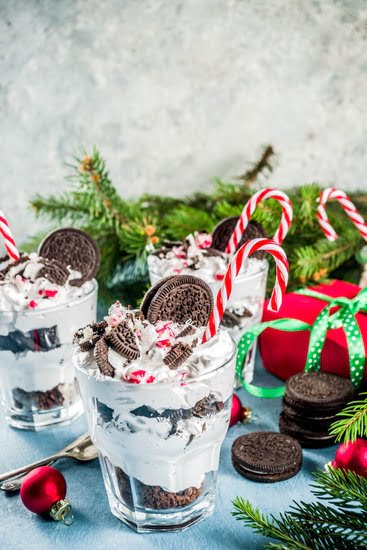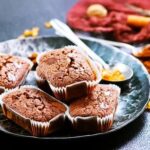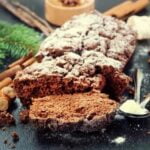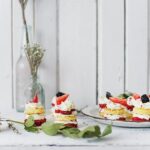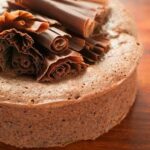In a world of extravagant and elaborate cakes, there is a growing trend that celebrates the beauty of simplicity in cake decoration. Gone are the days of intricate designs and excessive embellishments. Instead, a new wave of cake decorators is embracing minimalism, finding that less can truly be more when it comes to creating stunning confections.
With simple decorated cakes, the focus shifts from overwhelming designs to elegant and tasteful simplicity. This approach allows the true essence of the cake to shine through and highlights the craftsmanship involved in creating clean lines and subtle details. Whether you’re a beginner looking to enhance your skills or an experienced decorator seeking a refreshing change, exploring the world of simple decorated cakes opens up endless opportunities for creativity.
To embark on this journey, it is helpful to have the essential tools and ingredients at your disposal. From smooth frosting techniques to minimalist piping designs, mastering basic techniques will set the foundation for your cake decorating endeavors. In addition, learning how to select quality tools and ingredients on a budget ensures that you can achieve professional results without breaking the bank.
The possibilities for minimalist cake designs are vast and varied. From themed cakes for birthdays and weddings to visually appealing gradient creations, there are countless ways to explore this style. Additionally, incorporating colors, textures, and unconventional ingredients allows you to unleash your inner artist while still maintaining the elegance that comes with simplicity.
In this article series on simple decorated cakes, we will delve into each aspect of this art form step by step. From essential tools and techniques for beginners to problem-solving tips and creative ideas for advanced decorators, we will cover everything you need to know to create stunning cakes that make a lasting impression.
So join us as we embrace minimalism in cake decoration – where every choice is deliberate, every detail intentional, and every slice a testament to the remarkable beauty that lies in simplicity.
Essential Tools and Ingredients for Simple Cake Decorating
Must-Have Tools for Beginner Cake Decorators
When it comes to simple cake decorating, having the right tools can make all the difference. Here are some essential tools that every beginner cake decorator should have in their arsenal:
- Offset Spatula: An offset spatula is a versatile tool that allows for smooth and even frosting application. It has a long, narrow blade that makes it easier to reach into corners and create clean edges.
- Piping Bags and Tips: Piping bags and tips are essential for creating beautiful designs on cakes. Start with a basic set of tips such as round, star, and leaf tips, along with a reusable piping bag.
- Bench Scraper: A bench scraper is a handy tool for achieving sharp edges on your cakes. It helps to remove excess frosting and create clean lines around the sides of the cake.
- Turntable: A turntable is a game-changer when it comes to cake decorating. It allows you to easily rotate the cake while frosting or adding designs, ensuring consistency throughout.
- Cake Leveler: A cake leveler helps you achieve perfectly even layers by slicing off any domed tops from baked cakes. This ensures that your final cake has a professional look.
Recommended Basic Ingredients for Simple Cake Designs
While there are endless possibilities when it comes to flavor combinations and fillings, there are some basic ingredients that every beginner should have on hand when decorating simple cakes:
- Cake Mix or Homemade Cake Recipe: Whether you prefer using store-bought cake mixes or enjoy baking from scratch, having a reliable recipe is key.
- Buttercream Frosting: Buttercream frosting is versatile and easy to work with, making it perfect for simple decorated cakes. You can customize its flavor by adding extracts such as vanilla or almond.
- Fondant: Fondant is often used to achieve smooth and flawless finishes on cakes. It can be colored, rolled out, and draped over the cake for a polished look.
- Food Coloring: Food coloring is an essential ingredient for adding pops of color to your cake designs. Gel or paste colors are recommended as they are more concentrated and do not alter the consistency of your frosting.
- Simple Decorations: Sprinkles, edible pearls, and other simple decorations can add an extra touch of charm to your cakes. They are easy to use and can make a big impact with minimal effort.
Tips on Choosing Quality Tools and Ingredients on a Budget
Cake decorating can quickly become an expensive hobby, but there are ways to find quality tools and ingredients without breaking the bank:
- Research Online Reviews: Before investing in any tools or equipment, read customer reviews online to ensure that you are purchasing a reliable product. Look for reviews that mention durability, ease of use, and value for money.
- Shop Sales and Clearance: Keep an eye out for sales at baking supply stores or online retailers. Clearance sections often have discounted items that are still in great condition but may be from previous seasons or packaging styles.
- Borrow from Friends or Family: If you’re just starting out with cake decorating, consider borrowing tools from friends or family who may already have them. This allows you to try different tools without committing to purchasing them right away.
- Buy Ingredients in Bulk: For frequently used ingredients such as flour, sugar, butter, and vanilla extract, consider buying in bulk to save money in the long run.
- DIY Decorations: Instead of purchasing pre-made decorations, try making your own using simple techniques like piping small flowers with buttercream frosting or molding fondant into shapes with cookie cutters.
Remember, it’s not always necessary to have all the fancy gadgets or expensive ingredients to create stunning simple decorated cakes. With a few basic tools and ingredients, combined with some creativity and practice, you’ll be well on your way to creating beautiful cakes that are both delicious and visually appealing.
Basic Techniques for Simple Cake Decorating
When it comes to simple cake decorating, mastering a few basic techniques can go a long way in creating elegant and tasteful designs. Whether you’re a beginner or just looking to refine your skills, here are some essential techniques to help you achieve beautiful results.
1. Smooth Cake Frosting: One of the key elements of a simple decorated cake is a smooth and flawless frosting. To achieve this, start by applying a thin layer of icing as a crumb coat and chilling the cake in the refrigerator for about 15 minutes.
Then, add a thicker layer of frosting using an offset spatula or a bench scraper. Work from the top down, rotating the cake as you go, to create an even surface. Smooth out any imperfections with an offset spatula or Viva paper towel.
2. Minimalist Piping Designs: Piping can add an extra touch of elegance to your cake while keeping the design minimalistic. Start by filling a piping bag fitted with a small round tip with buttercream icing. Hold the bag at a 45-degree angle and apply even pressure to create clean lines or dots on your cake. Practice piping straight lines, shells, rosettes, or any other simple patterns that suit your design.
3. Clean Cake Borders: A neat and crisp border can give your cake that polished look. After frosting your cake, use an offset spatula to smooth out any excess frosting around the edges. Then, hold the spatula against the side of the cake at a slight angle and rotate it slowly while applying gentle pressure to create smooth edges.
Tips:
- Chill your cakes before decorating them for easier handling.
- Invest in quality tools such as an offset spatula, bench scraper, and piping bags.
- Experiment with different buttercream icing consistencies for varying textures.
By mastering these basic techniques, you can create simple yet visually appealing cake designs. With practice and creativity, you’ll be able to take your skills to the next level and impress your family and friends with beautiful cakes.
| Technique | Description |
|---|---|
| Smooth Cake Frosting | Create a flawless surface by applying thin crumb coat and thick layer of frosting. |
| Minimalist Piping Designs | Add elegance with simple piping patterns using a small round tip. |
| Clean Cake Borders | Create neat edges using an offset spatula or bench scraper. |
Quirky and Creative Ideas for Minimalist Cake Designs
When it comes to cake designs, simplicity doesn’t mean sacrificing creativity or uniqueness. In fact, minimalist cake designs offer a refreshing take on traditional cakes and allow for imaginative and quirky ideas to shine. Here are some creative ideas for minimalist cake designs that are sure to impress at any occasion:
- Showcasing simple themed cakes: Minimalist cake designs can still incorporate themes and be a perfect fit for birthdays, weddings, holidays, and other special occasions. For example, a simple white cake with small fondant flowers scattered on top can create a whimsical and romantic atmosphere for a bridal shower or wedding cake.
- Introduction to minimalist cake toppers and decorations: Instead of elaborate fondant figurines or intricate sugar flowers, consider using minimalistic cake toppers or decorations such as geometric shapes, monograms, or elegant edible gold leaf accents. These small details can make a big impact and add sophistication to your cake design.
- Tips on creating visually appealing gradient cakes with minimal effort: Gradient cakes are an impressive yet simple way to add visual interest to your dessert table. Using just two colors of frosting in different shades, you can create beautiful ombre effects on your cake layers. Start by applying the lightest color on the bottom layer and gradually darken the shade as you move up.
- Exploring the beauty of ombré and marble cake designs: Ombré cakes feature layers of varying shades of the same color, creating a stunning gradient effect. Marble cakes combine two or more different colored batters swirled together to achieve a marbled pattern that is both visually striking and easy to create. These simple techniques deliver impressive results without complicated designs or decorations.
By embracing minimalism in cake design, you open up a world of creativity and allow your imagination to shine through. The key is to focus on clean lines, subtle details, and bold choices that will make your cake stand out. Whether it’s utilizing geometric shapes, experimenting with gradient effects, or exploring the beauty of ombré and marble designs, minimalist cake decorating offers endless opportunities for quirky and creative ideas to come to life.
Unleashing Your Inner Artist
When it comes to decorating cakes, the possibilities are endless. Unleashing your inner artist means experimenting with colors and textures to create stunning and visually appealing cakes. By incorporating innovative techniques and unconventional elements, you can take your simple decorated cakes to the next level.
Inspiring minimalist color palettes for cake decoration
One way to elevate your simple decorated cakes is by choosing a minimalist color palette that complements the design. Soft pastels or monochromatic schemes can create a sophisticated look, while vibrant and contrasting colors can add a pop of excitement. Experimenting with different shades and hues can help you find the perfect combination that suits your style and occasion.
Innovative techniques for texture and pattern creation on cakes
Textures and patterns can add depth and visual interest to your cake designs. Consider using buttercream techniques such as ruffles, rosettes, or basketweave patterns to create texture on the surface of the cake. You can also experiment with embossing tools or stencils to add intricate designs or patterns onto fondant-covered cakes.
Mixing and matching different decorating elements for added flair
To truly unleash your creativity, mix and match different decorating elements to add flair to your simple decorated cakes. Sprinkles, edible glitter, metallic accents, or even edible flowers can enhance the overall look of your cake design. Don’t be afraid to think outside the box and combine various elements in unique ways that make your cake stand out.
Ideas for using unconventional ingredients to elevate simple cake designs
Why limit yourself to traditional cake decorations when there is a whole world of ingredients waiting to be explored? Consider using unconventional ingredients like crushed nuts, shredded coconut, or cookie crumbles as textured toppings. You can also experiment with flavored syrups or extracts in your frosting for an unexpected twist.
By experimenting with colors and textures, you can unleash your inner artist and create simple decorated cakes that are not only delicious but visually stunning as well. Don’t be afraid to try new techniques and think outside the box when it comes to decorating. With a little creativity, your cake designs will be true works of art.
Making a Statement
When it comes to cake decoration, sometimes less is more. Creating simple decorated cakes that serve as stunning centerpieces can make a bold and beautiful statement at any event or occasion. The key to achieving this impact is to focus on a single focal point and use minimal elements to create maximum visual appeal.
One of the most effective ways to create a centerpiece cake is to choose a standout element and build the design around it. This could be a unique cake topper, such as a handmade fondant figurine or an elegant floral arrangement. By keeping the rest of the cake design relatively simple, the focal point will stand out even more, commanding attention and making a strong statement.
To create stunning centerpiece cakes with minimal elements, consider using techniques like color blocking or negative space. Color blocking involves strategically placing bold, contrasting colors in different sections of the cake. This creates visual interest and draws attention to specific areas of the design. Negative space, on the other hand, involves leaving certain parts of the cake unfrosted or uncovered with fondant, allowing the natural texture and beauty of the cake itself to shine through.
Here are some tips for creating centerpiece simple decorated cakes:
- Choose a focal point: Select an eye-catching element that will be the star of your cake design.
- Keep it simple: Use minimal elements in your design to ensure that the focal point stands out.
- Consider color blocking: Experiment with bold color combinations placed strategically on your cake.
- Embrace negative space: Leave parts of your cake unfrosted or uncovered for added visual interest.
By following these tips and focusing on creating a strong focal point with minimal elements, you can make a statement with your simple decorated cakes that will leave a lasting impression on everyone who sees them. Whether it’s a wedding, birthday party, or any special occasion, these centerpiece cakes are sure to steal the show.
Embracing Minimalism
When it comes to cake decoration, there is a growing trend of embracing minimalism and incorporating natural elements into the designs. Decorating cakes with natural elements not only adds a touch of rustic charm but also allows for a unique and eco-friendly approach to cake decorating.
In this section, we will explore the concept of using organic and sustainable materials in cake decoration, provide tips on incorporating edible flowers, fruits, and herbs into your designs, and offer suggestions for achieving a rustic and minimalist charm.
One way to embrace minimalism in cake decoration is by incorporating organic elements such as edible flowers, fruits, and herbs. These natural materials not only add a pop of color to your creations but also bring a fresh and beautiful look to your cakes.
Edible flowers such as lavenders, roses, violets, calendulas, or pansies can be used as stunning cake decorations. When using edible flowers, ensure they are safe for consumption by purchasing them from reputable sources or growing them in your own pesticide-free garden.
Fruits like berries, citrus slices, or even figs can be creatively added to cake designs for an extra burst of flavor and visual appeal. Additionally, herbs like mint leaves or rosemary sprigs can be strategically placed on cakes to enhance the overall aesthetics. Remember to consider the flavor combinations when choosing which fruits and herbs to use; they should complement the taste of the cake.
To achieve a rustic and minimalist charm with natural materials in cake decoration, it’s important to take inspiration from nature itself. Consider incorporating textures such as woodgrain or tree bark onto the surface of your buttercream-frosted cake using specialized tools or stencils.
You can also create patterns resembling natural elements like stones or rocks by piping different shades of gray icing onto fondant-covered cakes. By experimenting with different natural textures and patterns on your cakes, you can add depth and visual interest to your minimalist designs.
Incorporating natural elements into cake decoration not only allows you to create visually stunning cakes but also promotes sustainability in your baking endeavors. By embracing minimalism and using organic materials, you can create unique and eco-friendly cake designs that are sure to impress. So go ahead, gather some edible flowers, fruits, and herbs, and let nature inspire your next simple decorated cake creation.
Problem-Solving and Troubleshooting Tips for Simple Cake Decoration
Decorating a cake can be a fun and rewarding experience, but it’s not without its challenges. Whether you’re a beginner or an experienced baker, it’s important to have some problem-solving and troubleshooting techniques in your toolbox. This section will address common issues that may arise during the cake decorating process and provide practical solutions to help you achieve beautiful results.
One common challenge faced by beginners is achieving a smooth and even surface on their cakes. Uneven icing or fondant can detract from the overall appearance of the cake. To ensure a smooth surface, start by leveling your cake layers before stacking them.
Use a serrated knife or a cake leveler to trim any domed tops. Then, apply a crumb coat-a thin layer of frosting-to seal in any loose crumbs. This will create a smooth base for your final layer of icing or fondant.
Another issue that may arise is cracked or uneven icing/fondant. If you notice cracks in your icing or fondant, try applying gentle pressure with the palm of your hand to smooth it out. You can also use a small offset spatula to carefully push the icing or fondant into place. If the cracks are too severe, consider covering them up with additional decorations such as flowers or piped designs.
In addition to these specific troubleshooting tips, here are some general guidelines to keep in mind:
- Make sure your buttercream frosting is at the right consistency before applying it to your cake – too stiff of a frosting can make it difficult to spread evenly, while too thin of a frosting may result in an overly soft texture.
- Allow enough time for your cakes and frostings to cool completely before starting the decorating process – this will prevent melting or sliding decorations.
- Practice patience and take your time when smoothing out any imperfections – rushing through this step may result in further damage to your cake.
By following these problem-solving and troubleshooting tips, you’ll be well-equipped to overcome any obstacles that come your way during the cake decorating process. Remember, practice makes perfect, and with a little patience and creativity, you can create stunning and flawless simple decorated cakes.
Conclusion
In conclusion, simple decorated cakes have proven to be a beautiful and effective trend in cake decoration. The concept of less is more truly shines through in these designs, showcasing elegance and taste without overwhelming the senses. By providing essential tools and ingredients, basic techniques, quirky ideas for minimalist designs, tips on colors and textures, and even problem-solving advice, this article has aimed to empower beginners to create their own stunning cakes.
One of the main advantages of simple decorated cakes is their accessibility to beginners. With a comprehensive list of must-have tools and basic ingredients, even those new to cake decorating can try their hand at creating something visually appealing. The step-by-step guides for frosting smoothly, using piping bags minimally, achieving clean borders, and flawlessly applying fondant provide clear instructions for novice decorators to follow.
Moreover, this article delves into more creative aspects of simplicity in cake decorating. It highlights inspiring color palettes, innovative texture and pattern creation techniques, as well as the use of unconventional elements like edible flowers and herbs. By embracing minimalism while still experimenting with different elements, beginners can add their own flair to their cake designs.
In the end, this article aims to inspire readers to unleash their creativity and embrace simplicity in cake decoration. Baking and decorating cakes can be a therapeutic hobby that brings joy both to the creator and those who get to enjoy the final product.
By starting with simple decorated cakes, beginners have the opportunity to build confidence in their skills while still producing stunning results. So go ahead, grab your tools and ingredients, let your imagination run wild, and delight others with your beautifully simple creations.
Frequently Asked Questions
What is the easiest cake to decorate?
The easiest cake to decorate is typically a sheet cake or a round cake with a smooth surface. These cakes provide a blank canvas for decorating and make it easier to apply various techniques and designs.
With a flat surface, you can easily spread frosting evenly and smoothly, creating a polished look. Additionally, sheet cakes offer more space for decorating with piped designs, edible decorations, or even writing messages.
How to decorate simple homemade cake?
Decorating a simple homemade cake can be done in multiple ways to create an appealing appearance. Start by ensuring your cake has cooled completely before starting any decoration. A classic way to decorate a homemade cake is by spreading a layer of frosting on the top and sides using an offset spatula or butter knife.
You can then add texture or patterns by using the back of a spoon, fork tines, or other tools to create swirls or lines on the frosting’s surface. Another option is to sprinkle powdered sugar or cocoa powder over the top for an elegant touch. Additionally, you can enhance the cake’s appearance by adding fresh fruit slices, chocolate shavings, or colorful sprinkles as garnishes.
How do I make a simple cake look good?
To make a simple cake look good, there are several tips and tricks to consider. First and foremost, ensure that your cake is baked evenly without any lumps or bumps on its surface. Trim off any uneven edges before decorating it further.
Next, choose an appropriate frosting that complements the flavors of your cake while providing aesthetic appeal—buttercream frostings are versatile and easy to work with for beginners. Once you’ve frosted your cake smoothly and evenly using an offset spatula, consider adding some embellishments such as piping designs around the edges using a pastry bag fitted with decorative tips, making rosettes in different colors at strategic intervals or using edible decorations like flowers or fondant shapes.

Welcome to our cake decorating blog! My name is Destiny Flores, and I am the proud owner of a cake decorating business named Cake Karma. Our mission is to provide delicious, beautiful cakes for all occasions. We specialize in creating custom cakes that are tailored specifically to each customer’s individual needs and tastes.

